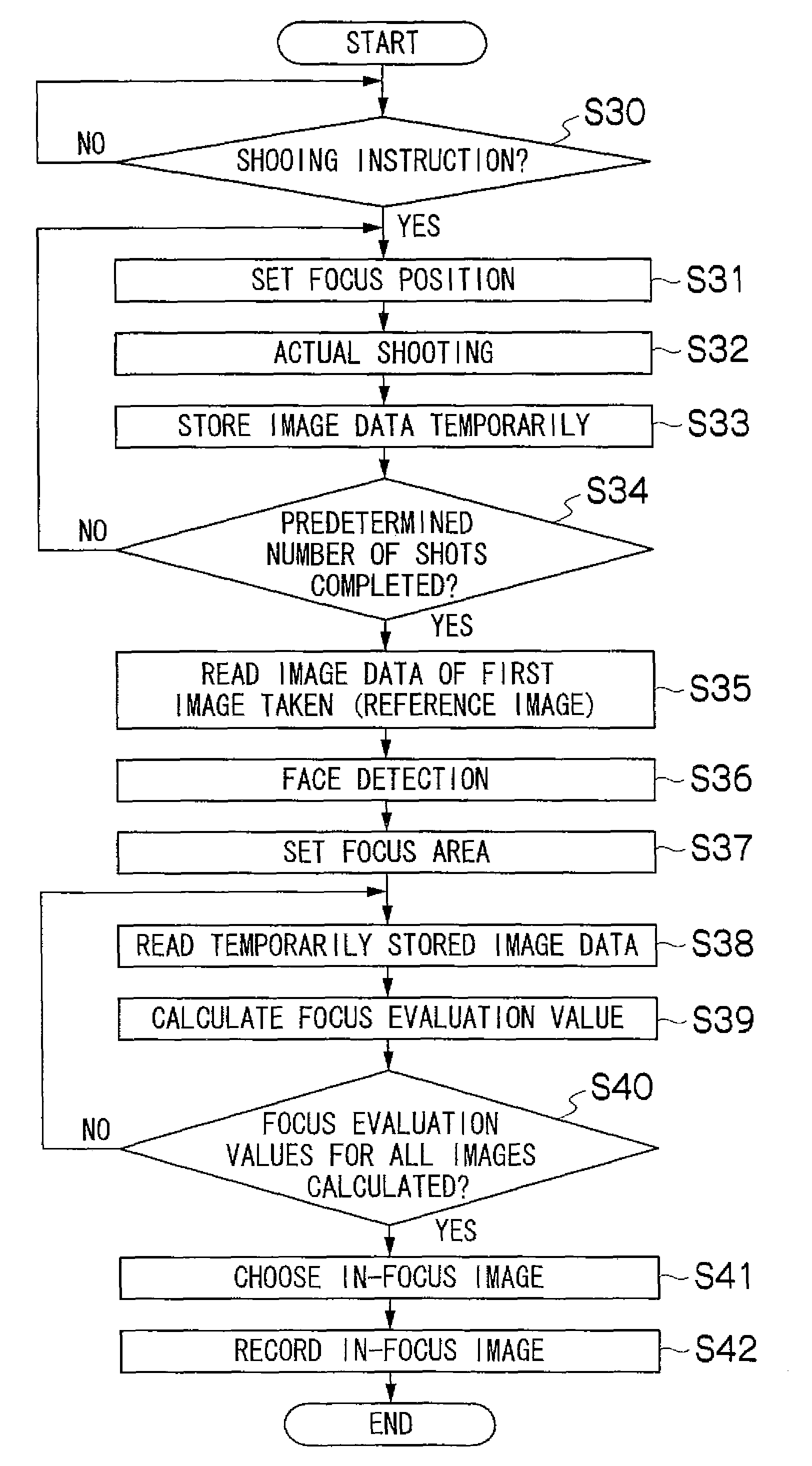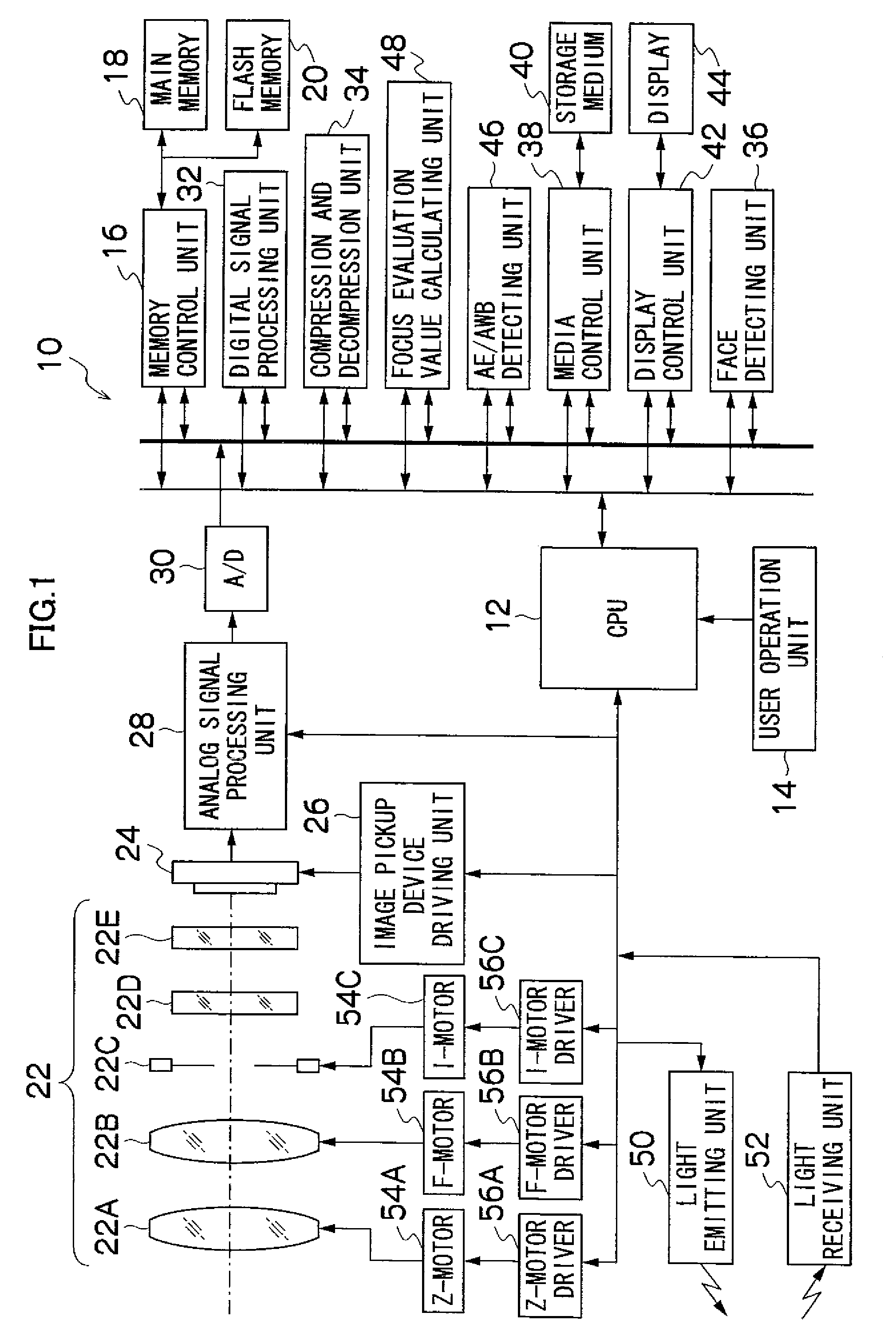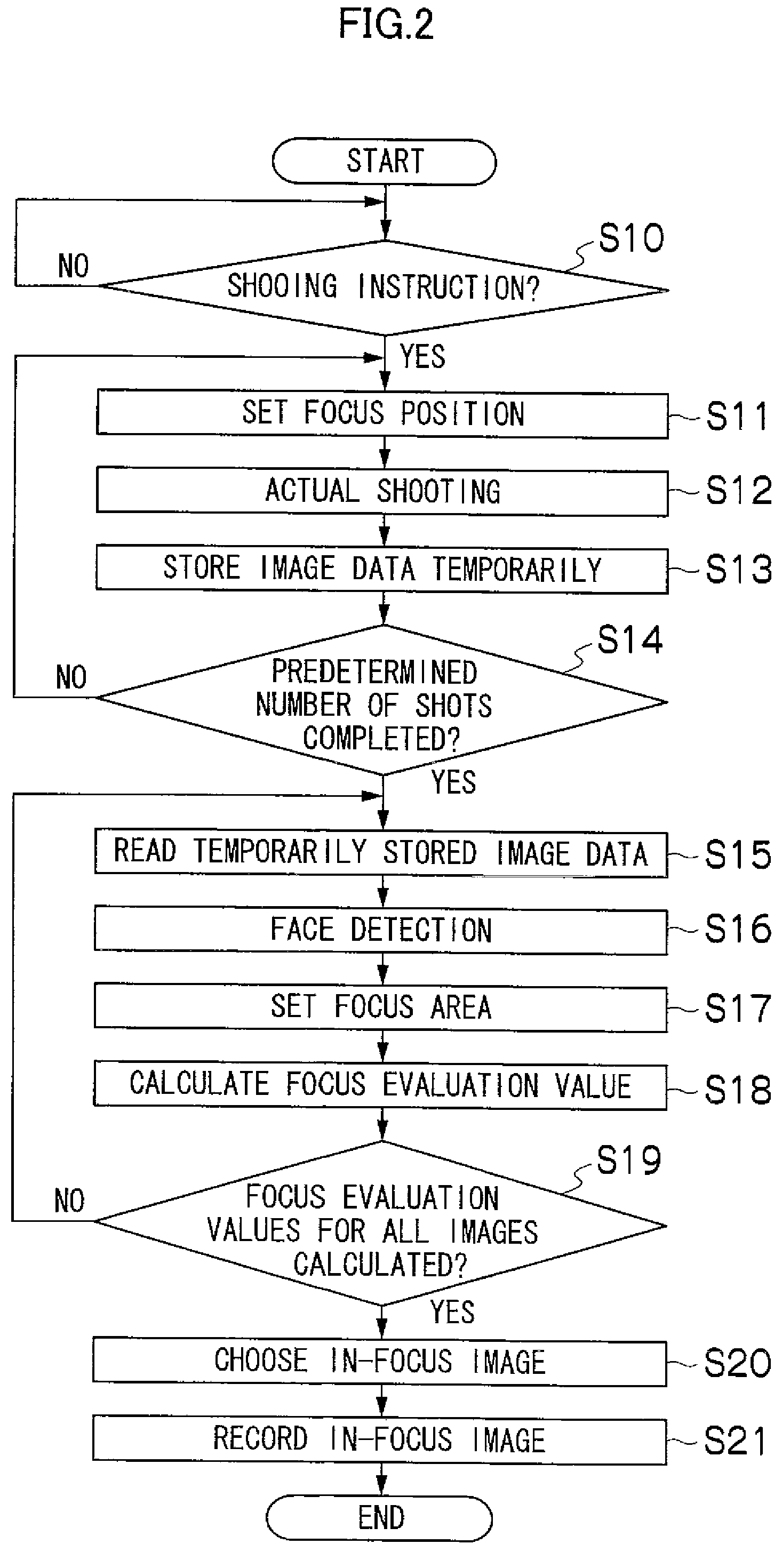Image-taking method and apparatus
a technology of image-taking and image processing, applied in the field of image-taking methods and apparatuses, can solve the problems of time lag, inability to obtain images in which the main subject is in focus, and inability to achieve the right moment to shoot, etc., and achieve the effect of quick captur
- Summary
- Abstract
- Description
- Claims
- Application Information
AI Technical Summary
Benefits of technology
Problems solved by technology
Method used
Image
Examples
first embodiment
[0130]In the focus bracketing mode, multiple images are taken with different focus positions in response to a single image-taking instruction. Then, a human face is detected in each of the images taken, a focus area is set at the position of the detected human face, and the focus evaluation value for the image is calculated. The image with the highest focus evaluation value is chosen and recorded in the storage medium 40.
[0131]Switching to the focus bracketing mode is made on a menu.
[0132]FIG. 2 is a flowchart showing a process procedure for shooting and recording in the focus bracketing mode.
[0133]When the camera is placed in the focus bracketing mode, the CPU 12 determines on the basis of an input from the user operation unit 14 whether an instruction to actually take an image has been input (whether the shutter button has been fully depressed) (step S10).
[0134]When the instruction is input, the CPU 12 performs a process for taking a predetermined number of images while changing t...
second embodiment
[0156]In the first embodiment, a focus area is set for each individual image taken and the focus evaluation value for the image is calculated.
[0157]In a second embodiment, face detection is performed on the basis of a particular image, a focus area is set at the position of a face detected in the image, and the focus area is used for calculating the focus evaluation values for all images. This can reduce the overall processing time.
[0158]The image on which to base is preferably the first image taken because the first image taken in general is more likely to have scene conditions (such as the position and direction of a human face) intended by the photographer.
[0159]FIG. 4 is a flowchart showing a process procedure for setting a focus area at a face detected in the first image taken and calculating focus evaluation values.
[0160]When the camera is placed in the focus bracketing mode, the CPU 12 determines on the basis of an input from the user operation unit 14 whether an instruction ...
third embodiment
[0190]A process performed when more than one person is included in an image will be described in a third embodiment.
[0191]If multiple people are in an image, the person with the highest face evaluation value is determined as the main subject and a focus area is set at the face of the person.
[0192]However, face detection performed in all images obtained by using focus bracketing does not necessarily produce the same results.
[0193]For example, the face of person A may be given the highest face evaluation value in the first image 1 (FIG. 10A) whereas the face of person B may be the highest face evaluation value in the next image 2 (FIG. 10B), as shown in FIGS. 10A and 10B. The cause may be a difference in degree of focus between images 1 and 2 caused by the focus bracketing or that the difference between the face of person A and an average face has been increased because person A has turned the head slightly away or moved.
[0194]The same face position needs to be used as a focus area be...
PUM
 Login to View More
Login to View More Abstract
Description
Claims
Application Information
 Login to View More
Login to View More - R&D
- Intellectual Property
- Life Sciences
- Materials
- Tech Scout
- Unparalleled Data Quality
- Higher Quality Content
- 60% Fewer Hallucinations
Browse by: Latest US Patents, China's latest patents, Technical Efficacy Thesaurus, Application Domain, Technology Topic, Popular Technical Reports.
© 2025 PatSnap. All rights reserved.Legal|Privacy policy|Modern Slavery Act Transparency Statement|Sitemap|About US| Contact US: help@patsnap.com



